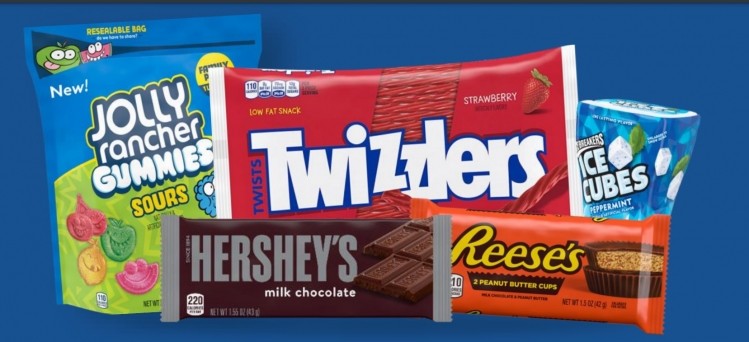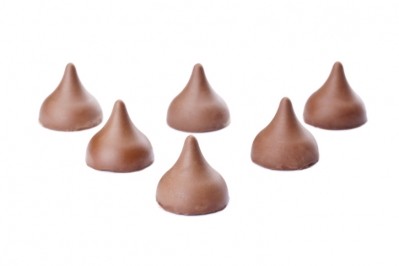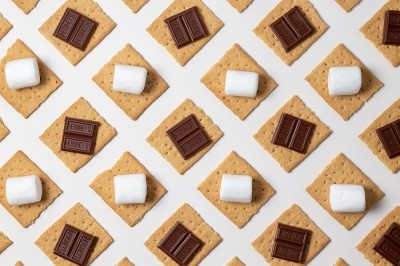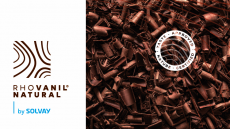Hershey expands US confection lead with ‘occasion-based’ innovation, personalized marketing

Already an established leader in US chocolate with 45% of share, Hershey also is gaining in the candy, mint and gum category where it now has 31% of the market, according to IRI data for the calendar year ending Jan. 1. This places Hershey a strong 5 share points ahead of its next leading competitor in CMG and a whopping 20 share points ahead of the third-place player in the segment, Chuck Raup, Hershey president of US confection, touted last week during the company’s investor day.
He added that the company isn’t taking its lead for granted, but rather is pushing forward to capture additional market share – adding 60 basis points of market share in the past three years while its top five competitors have lost a combined 215 basis points of market share.
“As we look at the business model that delivered this confection leadership, we see it’s a nice combination of top line growth and margin expansion,” Raup said.
He explained of the company’s 7% net sales growth between 2019 and 2022 about 4% came from net price realization and about 3% from volume – the latter a much more notable gain given the challenges posed first by the pandemic and then a constricting economy.
“The volume growth has been driven by really having a focus on winning consumer occasions,” which marks a shift in how the company has traditionally innovated and marketed itself, Raup said.
Hershey adopts fit-for-purpose approach to innovation
Pre-pandemic, Hershey treated all of its innovations as the same – a capital-intensive approach that did not generate the same returns as its new “fit for purpose” or “occasion-based” approach to innovation, Raup said.
“How that works, for example, is that in that strategic innovation bucket, we’ll have product innovation, also pack-type innovation, to drive that occasion penetration. And some examples are [launches] that pushed our core portfolio in [better-for-you], and then, importantly, pack types like our fridge-pack that’s taking advantage of grater in-home eating, and also our Super King, which takes advantage of on-the-go sharing occasions,” Raup said.
Hershey also is focused on physical and emotional wellness eating occasions, he added.
“For that mental well-being, we know that chocolate is the number one snack for de-stressing. So, when people are looking to take a break from a very tough world, the first snack that they pivot to is chocolate,” he said.
“As we look at better-for-you … we’ve also been investing in areas, most notably our reduced sugar portfolio,” Raup said, adding that better-for-you confection is growing about two times the category average.
“Sugar reduction is the number one thing that [consumers] are looking for. And so, we’ve really put a lot of effort into growing our reduced sugar portfolio. We’ve rebranded our sugar free items to zero-sugar, and we’ve seen tremendous growth. We’ve about doubled the business since we’ve done that,” he said.
Hershey also moved into the premium segment of better-for-you with the acquisition of Lily’s, and is investing in new sugar reduction technology that can bring products closer in performance to the core portfolio, Raup added.
Looking forward, Raup said he sees significant potential for innovation around gummies, which is growing three times the category average.
“What we’ve done here is we have invested in distribution, innovation, media trade support. We’ve also increased our capacity, which has unlocked about $100m of growth potential. And then we’ve also partnered with some other trademarks for licensing opportunities to expand our gummy portfolio,” Raup said.
Hershey Intelligence Engine enhances marketing in real time
Hershey also is taking a more personalized approach to media – a 180-degree change from the broad-reach approach it took pre-pandemic.
“For media, we’re continually pushing ourselves to really be on that cutting edge and continue to update the way we do things. And so, an example of a capability we’re delivering there is our Hershey Intelligence Engine,” which is “a proprietary database that enables us to identify the highest value consumers to target through things like confection purchase behavior,” Raup said.
“We’re also able to use this tool to get a more real time readout on the way our marketing is resonating with our consumers and make adjustments much more frequently,” he added.
The company also has moved from a mass TV grounded model to become more digitally forward. Now about 70% of its media spend is digital, which enables it to deliver better targeted, more compelling content to our consumers, Raup said.
Reflecting on these strategic changes, Raup said he is confident in Hershey’s future and ability to not only maintain but continue to expand its pole position in US confections.

















